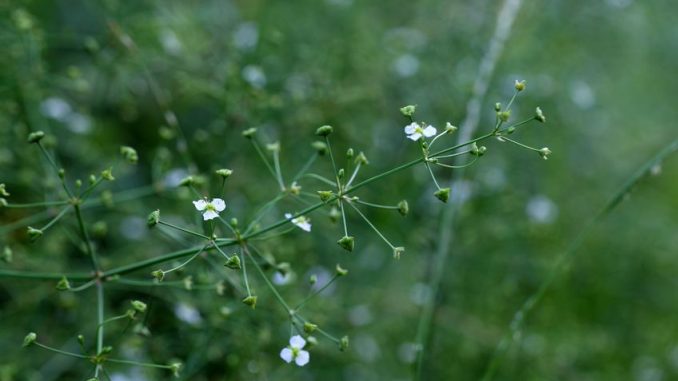
The rhizome of the European Water Plantain or more scientifically, Alisma orientale (Sam.) Juzep (also known as A. plantago-aquatica var. orientale) has been used traditionally in Chinese herbal medicine for many years. The rhizome is an important constituent of teas such as Cho-Yung™ tea.
Traditional Health Benefits
The following conditions have been treated traditionally using alisma rhizome:-
- hyperlipidemia (high fat levels in the blood stream
- diuretic activity
- hypoglycemic activity (will reduce high blood glucose levels to a more typical value) which implies it could treat diabetes.
- inhibition of renal stone formation
- Immunity improvement
- anti-inflammatory activity
- anti-tumour activity
- edema
- obesity
- gonorrhoea
- leukorrhea
- diarrhea
Alisma rhizome could be a potential liver protecting drug because it was shown to activate a particular receptor in liver cells called the farnesoid X receptor. Activation helps prevent liver injury and a condition called cholestasis. Cholestasis is the accummulation of bile acids in the liver and their systemic circulation. Controlling the farnesoid X receptor is important because this is part of the regulatory system involved in the synthesis, excretion and metabolism of bile acids. Admittedly this was a rat study but it raises the possibility of a novel drug use (Huo et al., 2018).
Safety Issues
There are some major issues with the use of alisma root. A high-dose or prolonged dose of alisma rhizome can produce water and electrolyte imbalances, acidosis, some liver and kidney damage, and blood in the urine (Tian et al., 2014).
This little, complex post will be updated further as the research is byzantine and reflects the varying nature of the components involved. If anyone has further information about how Alisma rhizome works I’d be grateful to read about it.
Componentry
The rhizome contains a vast array of different components. About 20 protostane triterpenoids have been isolated. The crude drug from the rhizome, ‘takusha’ contains two sesquiterpenoids which were first studied, alismol and alismoxide (Oshima et al., 1983) based on the guaiane skeleton, and two protostane triterpenes (Pei-Wu et al., 1988) including alisolide, alisol O and alisol P (Zhao et al., 2008). There are other components- the unusual triterpenes alismaketones –B-23-acetate etc. and other sesquiterpenoids such as orinetalol E and F (Peng et al., 2003). The protostane triterpenoids have been analysed effectively by uPLC coupled to time-of-flight mass spectrometry (Liu et al., 2010).
Studies to understand the biochemical properties of various extracts were conducted in the 80’s. Alismol was shown to inhibit Ca2+ influx through voltage-dependent Ca2+ channels found in rabbit thoracic aorta. This indicated an ability to reduce vascular contraction (Matsuda et al., 1987). Subseuqently, an acetone extract inhibited vascular contraction caused by high [KCl] (Kato et al., 1994).
Methanolic extracts of the rhizome have been found to inhibit nitric oxide production in LPS (lipopolysaccharide) induced activation of macrophages (Matsuda et al., 1999).
A study in a cancer cell line showed that alisol B could inhibit the sarcoplasmic/endoplasmic reticulum calcium ATPase pump. As a result of stopping this, the cancer cells lines self-destructed in what is termed autophagy (Law et al., 2010).
References
Kato, T., Tomita, M., Takigawa, M., Iwasaki, H., Hirukawa, T., Yamahara, J. (1994) Inhibitory Effects and Active Constituents of Alisma Rhizomes on Vascular Contraction Induced by High Concentration of KCl. Bull Chem. Soc. Jpn. 67 (5) pp. 1394-1398
Huo, X. K., Liu, J., Yu, Z. L., Wang, Y. F., Wang, C., Tian, X. G., … & Ma, X. C. (2018). Alisma orientale extract exerts the reversing cholestasis effect by activation of farnesoid X receptor. Phytomedicine, 42, pp. 34-42 https://doi.org/10.1016/j.phymed.2018.03.017
Law, B. Y., Wang, M., Ma, D. L., Al-Mousa, F., Michelangeli, F., Cheng, S. H., … & Lam, S. K. (2010). Alisol B, a novel inhibitor of the sarcoplasmic/endoplasmic reticulum Ca2+ ATPase pump, induces autophagy, endoplasmic reticulum stress, and apoptosis. Molecular cancer therapeutics, 1535-7163 http://mct.aacrjournals.org/content/early/2010/02/28/1535-7163.MCT-09-0700
Liu, X., Li, S-L., Zhou, Y., Song, J-Z., Zheng, Y-F., Peng, G-P., Xu, H-X. (2010) Characterization of protostane triterpenoids in Alisma orientalis by ultra-performance liquid chromatography coupled with quadrupole time-of-flight mass spectrometry. Rapid Commun. Mass Spectrometry. 24 (11) pp. 1514-1522
Matsuda, H., Kageura, T., Toguchida, I., Murakami, T., Kishi, A., Yoshikawa, M. (1999) Effects of sesquiterpenes and triterpenes from the rhizome of Alisma orientale on nitric oxide production in lipopolysaccharide-activated macrophages: Absolute stereostructures of alismaketones-B 23-acetate and -C 23-acetate. Bioorg. Medic. Chem. Letts 9(21) pp. 3081-3086 https://doi.org/10.1016/S0960-894X(99)00536-3
Matsuda, H., Kobayashi, G., Yamahara, J., Fujimura, H., Kurahashi, K., Fujiwara, M. (1987) Effects of alismol isolated from Alismatis Rhizoma on calcium-induced contraction in the rabbit thoracic aorta. Life Sci., 41(15) pp. 1845-1852
Oshima, Y., Iwakawa, T. (1983) Alismol and alismoxide, sesquiterpenoids of Alisma rhizomes. Phytochemistry. 22(1) pp. 183-185
Pei-Wu, G., Fukuyama, Y., Yamada, T., Rei, W., Jinxian, B., Nakagawa, K. (1988) Triterpenoids from the rhizome of Alisma plantago-aquatica. Phytochemistry 27(4) pp. 1161-1164
Peng, G-P., Tian, G., Huang, X-F., Lou, F-C. (2003) Guaiane-type sesquiterpenoids from Alisma orientalis. Phytochemistry 63(8) pp. 877-881
Tian, T.,, Chen, H. and Zhao. Y.-Y. (2014) Traditional uses, phytochemistry, pharmacology, toxicology and quality control of Alisma orientale (Sam.) Juzep: a review. Journal of Ethnopharmacology 158 (2014): pp. 373-387 https://doi.org/10.1016/j.jep.2014.10.061 .
Zhao, M., Xu, L-J., Che, C-T. (2007) Alisolide, alisols O and P from the rhizome of Alisma orientale. Phytochemistry 69(2) pp. 527-532

Leave a Reply